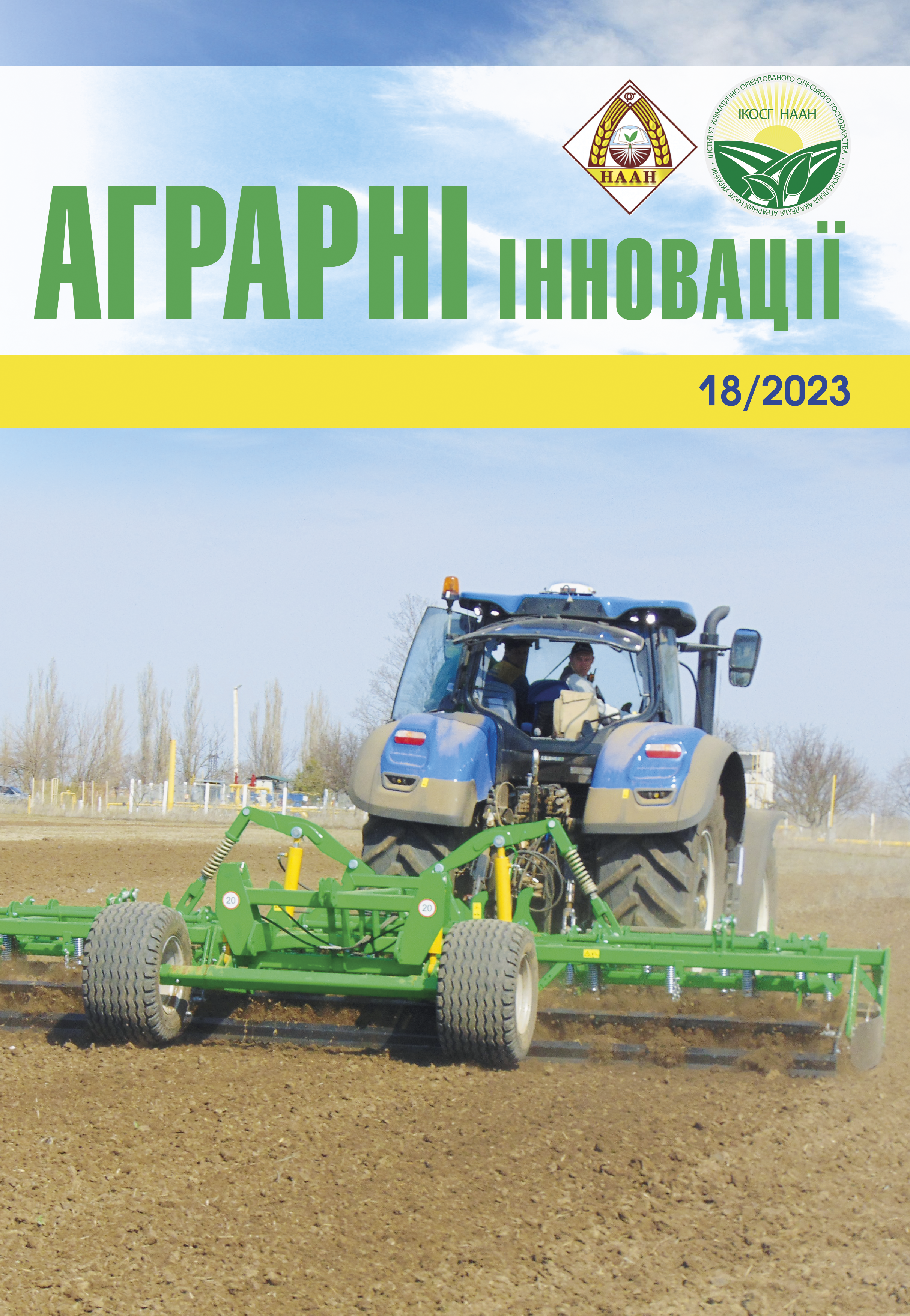JUSTIFICATION OF THE TERMS OF SOWING WINTER WHEAT IN CONDITIONS OF GLOBAL WARMING
Abstract
In the conditions of global climate change, which is manifested in the extension of the growing season and increased temperatures in the autumn period, the terms of sowing winter wheat are changing in the direction of delaying them in later periods. Goal. Based on the indicators of the average long-term air temperature for the last 10 years in the Pravoberezhny Forest-Steppe zone, calculate the optimal sowing dates for winter wheat in comparison with the traditional sowing period of September 5–25. Methods. The research was carried out by processing the average long-term indicators of air temperature in the Vinnytsia region for the period 2011-2022 and for earlier periods according to the data of the Vinnytsia Regional Center for Hydrometeorology. The results. With the average long-term sum of active temperatures of the autumn development of winter wheat crops during which it grows at an average temperature of 5 °С and higher, it is 347 °С. At the same time, for the period 2011–2022, the sum of the active temperatures of the autumn vegetation of winter wheat was 439 °С, which was 92 °С more than for the average multi-year period. Since the average air temperature was 8.3 °C during the period of October 2011–2022, it is necessary to calculate the timing of the shift in the timing of winter wheat sowing. With an excess of 92 °C in the average active temperatures of the autumn vegetation of winter wheat, it is necessary to shift the optimal sowing dates 11 days later, but in some years such shifting dates may be longer. Conclusions. Taking into account the need for winter wheat crops to accumulate around 350 °C during the autumn vegetation period and the extension of the autumn period of its growth and development, it is necessary to shift its sowing dates in the Right Bank Forest Steppe zone by 11 days in the direction of later dates. However, in some years, these terms can still be shifted to later ones.
References
2. Ткачук О.П. Еколого-економічна та біоенергетична оцінка технологій вирощування пшениці озимої після бобових багаторічних трав. Зернові культури. 2022. Том 6. № 1. С. 124–132.
3. Razanov S.F., Tkachuk O.P., Bakhmat O.M., Razanova A.M. Reducing danger of heavy metals accumulation in winter wheat grain which is grown after leguminous perennial precursor. Ukrainian Journal of Ecology. 2020. № 10 (1). Р. 254–260.
4. Разанов С.Ф., Ткачук О.П. Якість та екологічна безпека зерна озимої пшениці вирощеної після бобових попередників. Агробіологія. 2018. № 1. С. 27–34. 5. Ходаніцький В, Ходаніцька О. Коли та як сіяти озимину? Пропозиція. 2018. № 10. URL: https://propozitsiya.com/ua/koli-ta-yak-siyati-oziminu (дата звернення 04.04.2023).
6. Танчик С.П., Мокрієнко В.А., Моторний В.А. Вплив строків сівби на особливості формування зимостійкості та продуктивності у рослин пшениці озимої в правобережному Лісостепу України. Наукові доповіді НУБіП. 2013. № 4 (40).
7. Макаров Л.Х., Скорий М.В. Агротехніка пшениці озимої в неполивних умовах півдня України: монографія. Херсон: Айлант, 2010. 240 с.
8. Ткачук О.П. Особливості вегетації агрофітоценозів пшениці озимої після попередників бобових багаторічних трав. Збірник наукових праць Уманського національного університету садівництва. 2021. Вип. 98. Ч. 1. С. 150–162.






